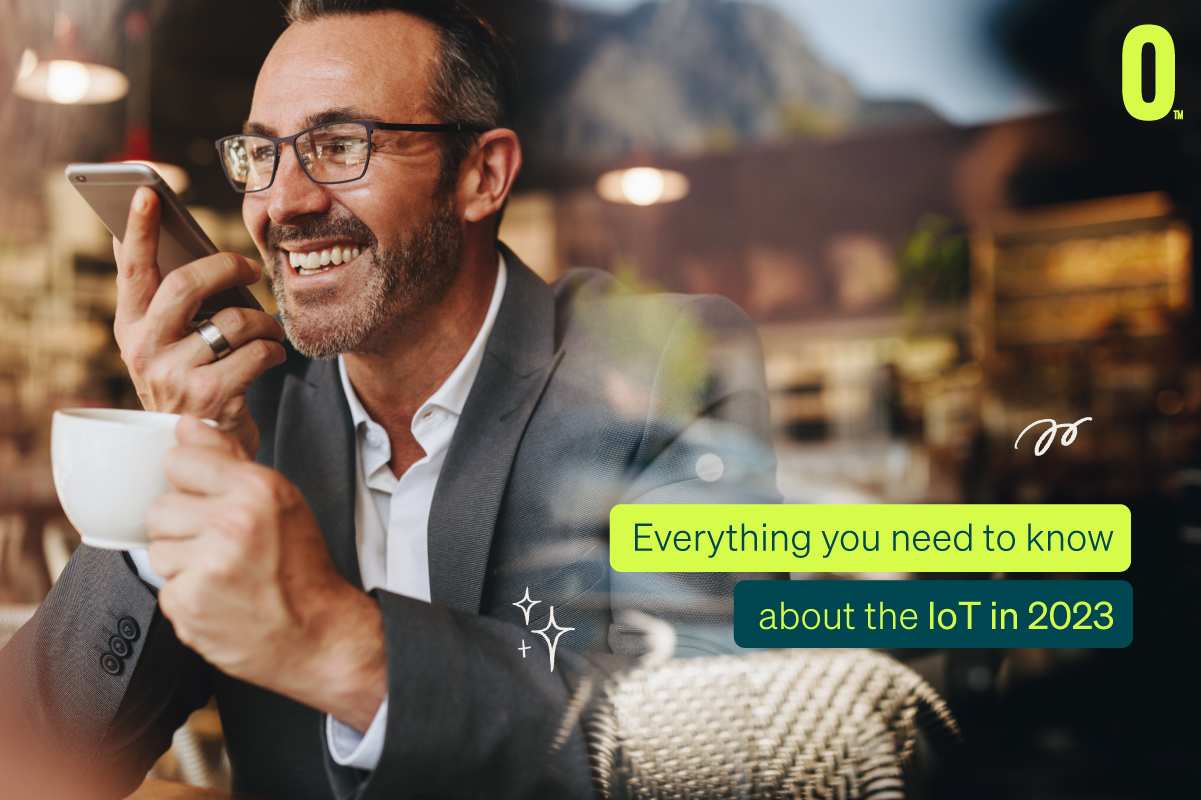The Internet of Things (IoT) has undergone a remarkable evolution, transforming from a mere buzzword to a dynamic, interconnected ecosystem that permeates every facet of our lives – especially during the AI revolution. In the 2023, IoT is far from a technological curiosity; it’s an integral part of our daily existence, impacting industries, improving efficiency, and raising the bar for innovation. In this extensive guide, our ISO27001 certified Managed Service Provider (MSP) in Melbourne will explore the IoT, its current state, growth, cybersecurity challenges, and the transformative influence of IoT on diverse industries when you access IaaS outsourcing.
How does the IoT work?
At the heart of IoT lies a vast network of physical devices, objects, and sensors, all interconnected via the internet. These devices, be they home appliances, industrial machines, or wearable gadgets, are equipped with sensors, software, and communication technology, which enable them to collect and transmit data.
But IoT devices are not just data collectors; they are also interactive tools. They can receive commands and directives from a central system or, more commonly, from users through their smartphones or other connected devices. This two-way communication empowers users to remotely control IoT devices, fostering convenience and efficiency.

In essence, IoT weaves a web of interconnected devices that can sense, communicate, and respond to changes in their environment. This interconnectedness makes it widely applicable across all applications in life, business, and more, making our lives and work more efficient, convenient, and secure.
Key IoT statistics for 2023
Before we look further into the IoT landscape of 2023, let’s take a moment to appreciate the magnitude and significance of IoT through some key statistics:
- PWC reports that 94% of executives believe the benefits of IoT outweigh the risks.
- IoT Analytics shows that 54% of IoT projects are driven by cost savings.
- The global IoT industry is anticipated to reach over US$1.177 trillion by 2024.
- The global count of Internet of Things (IoT) devices is projected to nearly double, increasing from 15.1 billion in 2020 to over 29 billion IoT devices by the year 2030.
- McKinsey research shows that 127 new IoT devices connect to the internet every second.

The transformative impact of IoT on businesses
Few innovations have left as profound an impact on businesses as IoT. This paradigm shift has redefined business operations across industries, offering unprecedented opportunities for growth, efficiency, and innovation.
- Enhanced data-driven decision-making:
At the heart of IoT’s influence on businesses lies its ability to generate copious amounts of real-time data for use in business intelligence solutions. This treasure trove of information enables companies to make more informed and timely decisions. By collecting data from various sources such as customer behaviours, production processes, and supply chain logistics, businesses can gain insights that were previously inaccessible.
- Operational efficiency and cost savings:
IoT’s integration into business processes has streamlined operations and ushered in new levels of efficiency and business process improvement. Connected devices allow for remote monitoring and predictive maintenance of machinery, reducing downtime and minimising maintenance costs. Manufacturing plants equipped with IoT sensors can optimise production by identifying bottlenecks in real time and adjusting workflows accordingly.
- Personalised customer experiences:
IoT has redefined customer engagement by enabling businesses to offer tailored customer experiences. With data gathered from connected devices, companies can better understand their customer’s preferences and behaviours, leading to personalised recommendations and offerings.
- Supply chain management and logistics:
IoT has revolutionised supply chain management, allowing companies to monitor the movement of goods throughout the entire logistics process. Sensors embedded in shipments provide real-time updates on location, temperature, humidity, and other critical variables. The data not only enhances transparency but also enables swift interventions in case of deviations from the desired conditions, safeguarding the quality of products in transit.
- New business models and revenue streams:
The advent of IoT has opened doors to novel business models and revenue streams. Companies can now offer their products as services, capitalising on IoT’s capabilities. For instance, instead of selling a product outright, manufacturers can provide it as a service, charging customers based on usage. The shift to a subscription-based model fosters long-term relationships with clients and generates recurring revenue.
The top 10 IoT trends for 2023
Here are 10 top IoT (Internet of Things) trends that have been prominent and continue to shape the landscape:
- Edge computing: IoT devices are generating vast amounts of data, and edge computing involves processing this data closer to the source, reducing latency, and improving real-time decision-making.
- 5G integration: The rollout of 5G networks enables faster and more reliable communication between IoT devices, unlocking new possibilities for applications that require high bandwidth and low latency.
- AI and machine learning integration: AI and machine learning are being integrated into IoT systems to analyse and interpret data, enabling predictive maintenance, anomaly detection, and more advanced automation.
- Security enhancements: As the number of connected devices grows, so does the potential attack surface. IoT security is evolving with features like device authentication, encryption, and secure firmware updates.
- Smart cities: The concept of smart cities involves using digital twin technology and the IoT to manage urban services more efficiently, such as traffic control, waste management, energy consumption, biometric security, and public safety.
- Healthcare IoT: IoT is transforming healthcare with applications like remote patient monitoring, wearable health devices, and smart medical equipment for improved patient care and management.
- Industrial IoT (IIoT): In industries like manufacturing, IIoT is being used for predictive maintenance, supply chain optimisation, and overall operational efficiency improvements.
- Environmental monitoring: IoT devices are being deployed for environmental monitoring, helping to track pollution levels, climate changes, and wildlife conservation efforts.
- Retail and customer experience: IoT is enhancing retail through connected shelves, personalised shopping experiences, and improved inventory management.
- Agriculture IoT (AgriTech): IoT is revolutionising agriculture with precision farming techniques, where sensors and data analysis optimise crop yield, manage irrigation, and monitor livestock.
Guarding the gates: IoT cybersecurity statistics
As the IoT ecosystem continues to expand, security concerns have grown in parallel – as they did with the introduction of new technologies in the past, like the internet. Here are some noteworthy statistics related to the security of IoT devices and the rising cyberattack threat:
- The IoT Security market is anticipated to expand, with its size expected to increase from US$20.9 billion in 2023 to reach $US59.2 billion by 2028, reflecting a compounded annual growth rate (CAGR) of 23.1%. This reflects the heightened awareness of security issues in the IoT landscape.
- In the initial half of 2023, Distributed Denial of Service (DDoS) attacks alone propelled by IoT surged by a staggering 300%, resulting in an approximate worldwide financial loss of US$2.5 billion.
- During the initial half of 2023, there was a tenfold increase in malware activity within OT and IoT environments on a global scale. Simultaneously, alerts regarding unwanted applications doubled as nation-states, criminal groups, and hacktivists maintained their focus on targeting critical sectors such as healthcare, energy, and manufacturing.
- Gartner predicts that over 25% of all cyberattacks against businesses will involve the IoT.
The IoT, much like the internet, is the future of business, offering unprecedented opportunities for innovation and efficiency. To harness its potential, businesses must prioritise security and risk management. Our ISO27001 certified MSP excels in securing IoT ecosystems, implementing robust encryption, regular updates, and monitoring to safeguard data. With our expertise, businesses can navigate the IoT landscape with confidence, ensuring seamless operations and data protection.
In conclusion, the IoT landscape in 2023 is vibrant and full of potential. It’s reshaping industries, driving innovation, and offering solutions to some of the most pressing challenges in various sectors. With continuous growth and advancements, IoT is not just a technology trend—it’s a transformative force that is here to stay – and it needs the right cybersecurity approach to reap the rewards. As we move forward, we can expect IoT to touch every aspect of our lives, making them more connected, efficient, and convenient.
Partner with the best MSP in Melbourne for affordable future-forward IT services and solutions
Otto IT, our ISO27001 certified Managed Service Provider (MSP) in Melbourne is your ultimate partner for comprehensive IT and IoT solutions. With expertise in planning, delivering, and managing IT projects encompassing infrastructure, cloud solutions, and cybersecurity, we effectively solve your IT skills hiring challenges and ensure your technology runs seamlessly. Offering 24/7 local support, we prioritise your needs without international call centres. Our vCIO services, consulting, and tech budgeting provide tailored strategies, and we cater to diverse industries, from legal and accounting to retail, e-commerce, education, and local government. Trust us as your trusted partner for all your IT and IoT requirements – get a FREE strategy call today.




